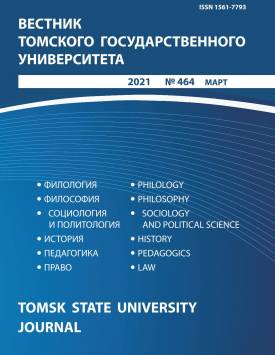Suspended Sentence and Placement in a Special Educational Institution: Features of Application and Correlation in the Context of the Systematic Nature of Criminal Law
The systematic nature of criminal law forms the main features of the industry, namely: normativity, universalism, that is, the absence of casuistry and obligation. The strict consistency of both the entire industry and its individual institutions allows avoiding the redundancy of criminal law regulation, clearly determining the legal status of a person in conflict with the law. However, the norms of the Criminal Code of the Russian Federation do not always meet these requirements due to defects in legal technology, and, sometimes, gaps in regulation. In practice, the courts, in an effort to minimize the above defects, sometimes resort to excessive criminal law regulation; as an example, the article gives the ratio of the application of suspended sentence and placement in a special educational institution of a closed type. The article analyzes sentences to minors in which Art. 73 and Part 2 of Art. 92 of the Criminal Code of the Russian Federation were simultaneously applied in one sentence for the same act. For a comprehensive study, the article analyzed sentences to minors held in special educational institutions of a closed type for the period from 2014 to 2020, criminal statistics posted on the website of the Judicial Department of the Supreme Court of the Russian Federation, as well as various points of view of leading legal scholars. The research methods of static observation, analysis and synthesis, the system-structural method, as well as a number of factographic methods, were used. The study develops from the general to the specific, i.e., first, systematicity is analyzed as a property of the branch of criminal law and then as a property of a legal institution, namely, the release of minors from criminal liability. Consistency as a property of the institution of exemption from criminal punishment presupposes the impossibility of intersecting elements within one institution. Special attention is paid to the legal nature of suspended sentence as the most common punishment measure for minors, and its effectiveness. Then the cases of the simultaneous application of Art. 73 and Part 2 of Art. 92 of the Criminal Code of the Russian Federation are analyzed. In the course of the study, the author examines the features of suspended sentence and placement in a special educational and educational institution of a closed type, compares these two forms of criminal liability, and highlights the differences. The conclusion is that the simultaneous placement in a special educational institution of a closed type and suspended sentence are a redundancy of criminal law regulation. The article raises the question of the need to improve the Criminal Code in terms of the development of placement in a special educational and educational institution of a closed type as a type of exemption from criminal punishment: the court is to be provided with the opportunity to control the juvenile offender's correctional process.
Keywords
gaps in criminal law, suspended sentence, release of minors from punishmentAuthors
| Name | Organization | |
| Terentieva Vаleria A. | Kemerovo State University | terent@list.ru |
References

Suspended Sentence and Placement in a Special Educational Institution: Features of Application and Correlation in the Context of the Systematic Nature of Criminal Law | Vestnik Tomskogo gosudarstvennogo universiteta – Tomsk State University Journal. 2021. № 464. DOI: 10.17223/15617793/464/30
